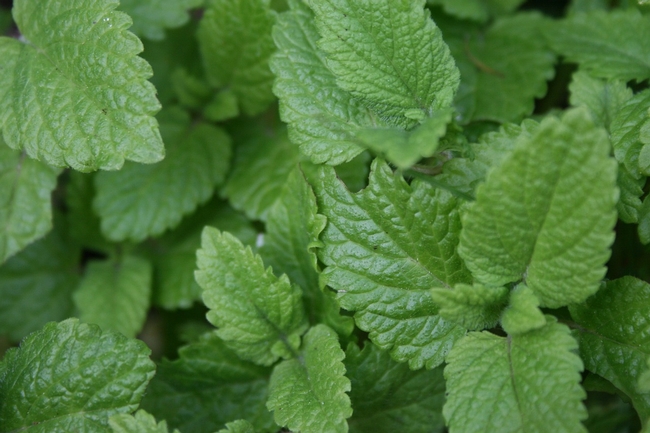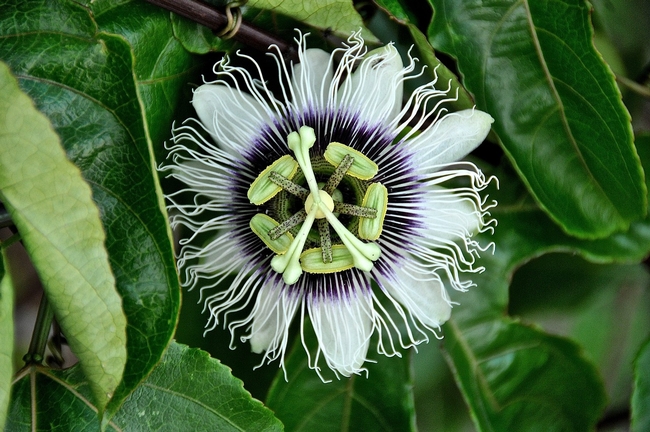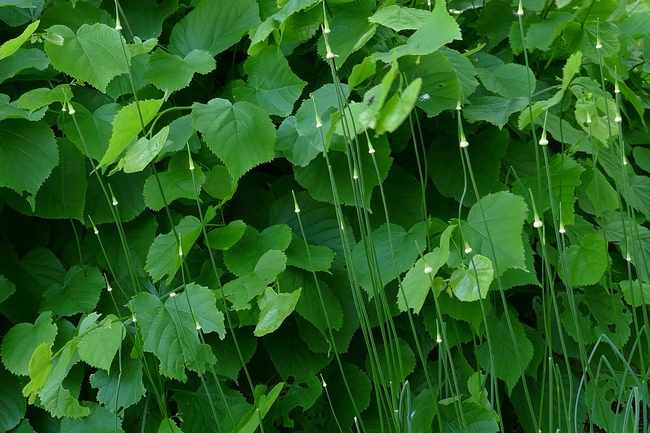I went to the Santa Cruz farmers market last week and meandered over to a plant stand. Someone was selling lemon balm in a pot for four dollars. “Why would anyone pay for one of those?” I mused out loud. “I have hundreds I would gladly give away.”
I got into conversation about it with another shopper, and just as I was about to conclude the best business arrangement since Tom Sawyer's fence—someone was willing to pay me to take away my lemon balm—my mortified daughter dragged me away.
Lemon balm (Melissa officinalis) is part of the mint family. It is native to the Mediterranean, Iran and south and central Asia but has spread and naturalized in Europe and North America. And in my back yard. It's a perennial—meaning it comes up every year—with bright green heart-shaped leaves and tiny white flowers that are alluring to bees and hummingbirds.
Lemon balm's attraction for bees makes it useful in honey production and its oil is used in perfumery. I like to put a bunch of the leaves in iced tea. You can also chop them into salads or use them to flavor ice cream or cakes or to decorate a fruit or cheese plate.
If you plant lemon balm in the ground—as opposed to confining it in a pot—in about a year, that charming mound of greenery will have transformed into a dozen assertive shrubs. I cut mine back but that effort was useless. They responded by growing over three feet tall and casting shadows over the lavender. I will have to dig them out this winter when the ground is soft from rain.
On the positive side, lemon balm is a pretty plant that is perfect for the beginning gardener who has little confidence. Just keep an eye on it.
Wild onion lily (Allium triquetum) was all over my back yard when I moved in. Through decades of labor—pulling them out (again, when the ground is damp) or lifting them out with a garden fork—I have reduced their numbers.
The only thing that really controls this plant is foot traffic. It doesn't emerge from ground that is heavily trodden. But once you begin digging and planting, the tiny dormant bulblets in the ground will be disturbed, and they will start to grow.
These onions look a lot like scallions. They are eminently edible and pretty when they flower, but many people consider them a noxious weed. (Folks in the American south prize wild onions.) I don't ever advise using herbicides, and for this plant, they don't work. The onion leaves are so slick and smooth the chemicals slide off.
This spring, a new plant appeared among the valerian and salvia and love-in-a-mist in my front yard. It was a bright green little sprig, with tender leaves that grew in circular whorls around a stem.
Within two weeks it had morphed into a formidable vine that was pulling my flowers down to the ground. I had to wear gloves yanking it out because the greenery had a sticky, unpleasant texture and the tiniest of bristles that made my skin itch.
While I was doing this, a neighbor walked by and informed me it was ladystraw. Some people called it stickweed. I thanked her and went upstairs to get my UC Master Gardeners Weed Pest Identification and Monitoring Identification cards. Most of the weeds in it have names that sound like those of the minor characters in A Midsummer Night's Dream.
Sure enough, there was my new invader, catchweed bedstraw (Galium aparine). Pulling it out before it set seed was the right thing to do, as catchweed spreads. I had never seen it before, but I noticed it all over the neighborhood by midsummer. A luxuriant swath of it festooned my next-door neighbor's rain gutter. It was at least twelve feet long. Unlike the wild onion and the lemon balm, which can be useful, catchweed bedstraw is an annoyance.
The latest newcomer is a passionflower (Passiflora incarnata). I was sorry the 30-year-old passionflower next door had died, but a bird must have dropped a seed outside my kitchen window, because now I have a 10-foot-tall vine creeping up the front of my house.
The passionflower needs some water occasionally and some organic fertilizer once a year. Other than that, it is easy care, but it does like to twine around trees, so don't let it get away from you.
Passionflower is the food source for the orange or gulf fritillary (Dione vanillae). The taxonomist Carl Linnaeus named the butterfly after a painting by Maria Sybilla Merian, the 17th century botanical artist. In her painting, the fritillary is resting on a vanilla orchid; today we know that they don't eat orchids. Watching the butterflies flutter about the vine is a pleasant way to pass the time. The passionflower can be an invasive plant, but it is one that I welcome.
Workshop: Join UC Master Gardeners of Napa County for “Growing Cool-Season Vegetables” on Saturday, August 10, from 10 am to noon, at University of California Cooperative Extension Office, 1710 Soscol Avenue, Napa. From lettuce and carrots to more exotic greens and vegetables, many delicious choices await the fall and winter gardener. This hands-on workshop provides growing tips from planning and planting to harvest and into the kitchen. Register here.
Workshop: Join UC Master Gardeners of Napa County for “Growing Cool-Season Vegetables” on Sunday, August 18, from 2 pm to 4 pm, at Yountville Community Center, 6516 Washington Street, Yountville. From lettuce and carrots to more exotic greens and vegetables, many delicious choices await the fall and winter gardener. This hands-on workshop provides growing tips from planning and planting to harvest and into the kitchen. Register through Yountville Parks and Recreation. After clicking the link, find the registration page at Adult Activity > UC Master Gardeners > Fall & Winter Gardening.
Fall Faire: Join the UC Master Gardeners of Napa County for an entertaining and educational event on Saturday, September 28, from 1 pm to 4 pm, outdoors at University of California Cooperative Extension, 1710 Soscol Avenue, Napa. Enjoy exhibits on composting, monarch butterflies, succulents, water conservation, bees and more. The program includes activities for kids, a scarecrow contest, giveaways, and music. Admission is free.
Help Desk: The Master Gardener Help Desk is available to answer your garden questions on Mondays and Fridays from 10 am until 1 pm at the University of California Cooperative Extension Office, 1710 Soscol Avenue, Suite 4, Napa. Or send your questions to mastergardeners@countyofnapa.org. Include your name, address, phone number and a brief description.
Become a Master Gardener Volunteer: UC Master Gardeners of Napa County is now accepting applications for the Class of 2025. Visit napamg.ucanr.edu to read the informational brochure, then register to attend a mandatory information session for applicants. Application deadline is 5 pm on September 25.


